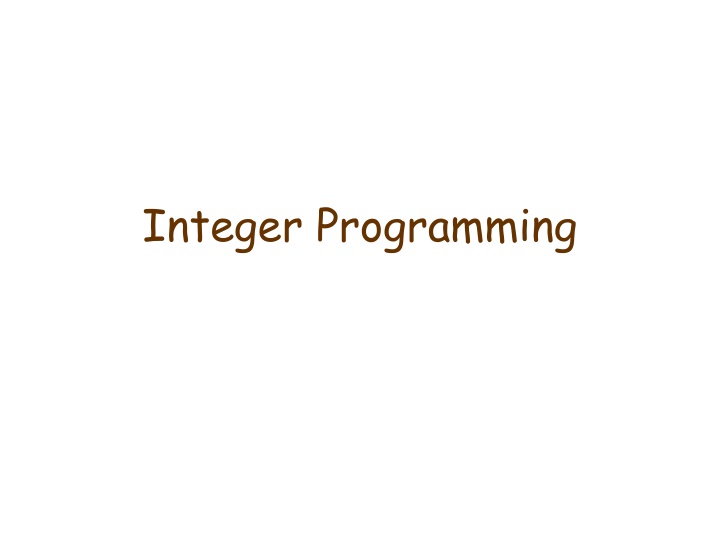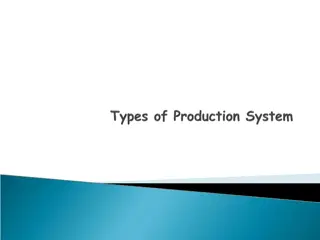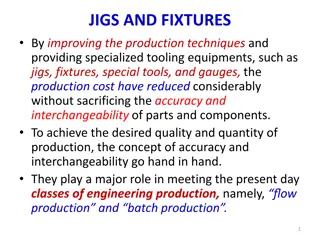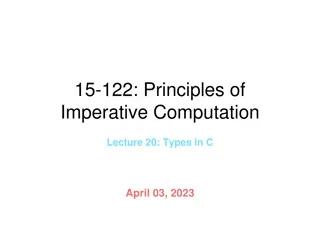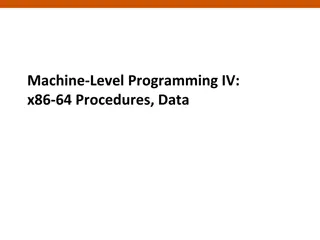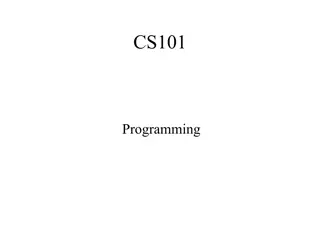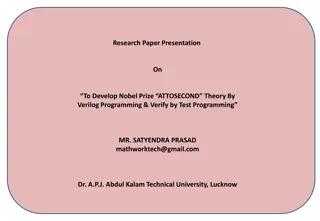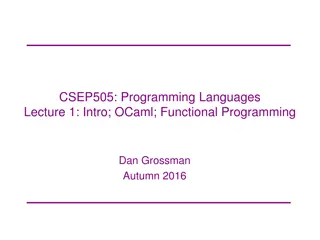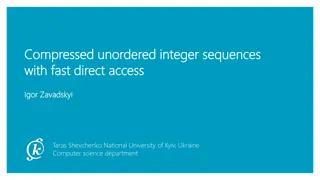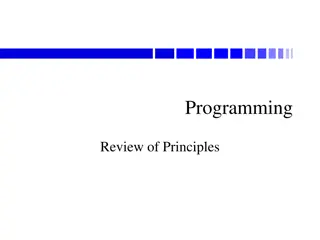Introduction to Integer Programming in Production Planning
Integer programming, a technique rooted in military logistics during WWII, is widely used in various industries due to its ability to model real-life situations efficiently. By formulating problems in a standard form and utilizing algorithms, integer programs can optimize decision-making processes. An example in production planning for a furniture manufacturer demonstrates how integer programming can maximize profit through strategic decision variables and constraints.
Download Presentation

Please find below an Image/Link to download the presentation.
The content on the website is provided AS IS for your information and personal use only. It may not be sold, licensed, or shared on other websites without obtaining consent from the author.If you encounter any issues during the download, it is possible that the publisher has removed the file from their server.
You are allowed to download the files provided on this website for personal or commercial use, subject to the condition that they are used lawfully. All files are the property of their respective owners.
The content on the website is provided AS IS for your information and personal use only. It may not be sold, licensed, or shared on other websites without obtaining consent from the author.
E N D
Presentation Transcript
Integer Programming Programming = Planning in this context Origins go back to military logistics in WWII (1940s). In a survey of Fortune 500 firms, 85% of those responding said that they had used linear or integer programming. Why is it so popular? Many different real-life situations can be modeled as integer programs (IPs). There are efficient algorithms to solve IPs.
Standard form of integer program (IP) maximize c1x1+c2x2+ +cnxn subject to a11x1+a12x2+ +a1nxn b1 a21x1+a22x2+ +a2nxn b2 . am1x1+am2x2+ +amnxn bm x1, x2, , xn Z+ (objective function) (functional constraints) (set constraints) Note: Can also have equality or constraint in non-standard form.
Standard form of integer program (IP) In vector form: maximize cx (objective function) subject to Ax b (functional constraints) x (set constraints) + Z n Input for IP: 1 n vector c, m n matrice A, m 1 vector b. Output of IP: n 1 integer vector x . Note: More often, we will consider mixed integer programs (MIP), that is, some variables are integer, the others are continuous.
Example of Integer Program (Production Planning-Furniture Manufacturer) Technological data: Production of 1 table requires 5 ft pine, 2 ft oak, 3 hrs labor 1 chair requires 1 ft pine, 3 ft oak, 2 hrs labor 1 desk requires 9 ft pine, 4 ft oak, 5 hrs labor Capacities for 1 week: 1500 ft pine, 1000 ft oak, 20 employees (each works 40 hrs). Market data: profit table $12/unit chair $5/unit desk $15/unit demand 40 130 30 Goal: Find a production schedule for 1 week that will maximize the profit.
Production Planning-Furniture Manufacturer: modeling the problem as integer program The goal can be achieved by making appropriate decisions. First define decision variables: Let xtbe the number of tables to be produced; xcbe the number of chairs to be produced; xdbe the number of desks to be produced. (Always define decision variables properly!)
Production Planning-Furniture Manufacturer: modeling the problem as integer program Objective is to maximize profit: max 12xt + 5xc+ 15xd Functional Constraints capacity constraints: pine: 5xt + 1xc+ 9xd 1500 oak: 2xt + 3xc+ 4xd 1000 labor: 3xt + 2xc+ 5xd 800 market demand constraints: tables: xt 40 chairs: xc 130 desks: xd 30 Set Constraints xt , xc, xd Z+
Solutions to integer programs A solution is an assignment of values to variables. A solution can hence be thought of as an n-dimensional vector. A feasible solution is an assignment of values to variables such that all the constraints are satisfied. The objective function value of a solution is obtained by evaluating the objective function at the given point. An optimal solution (assuming maximization) is one whose objective function value is greater than or equal to that of all other feasible solutions.
Topics in this class about Integer Programming Modeling real-life situations as integer programs Applications of integer programming Solution methods (algorithms) for integer programs (optional) Using software (called AMPL) to solve integer programs
Next time: IP modeling techniques
